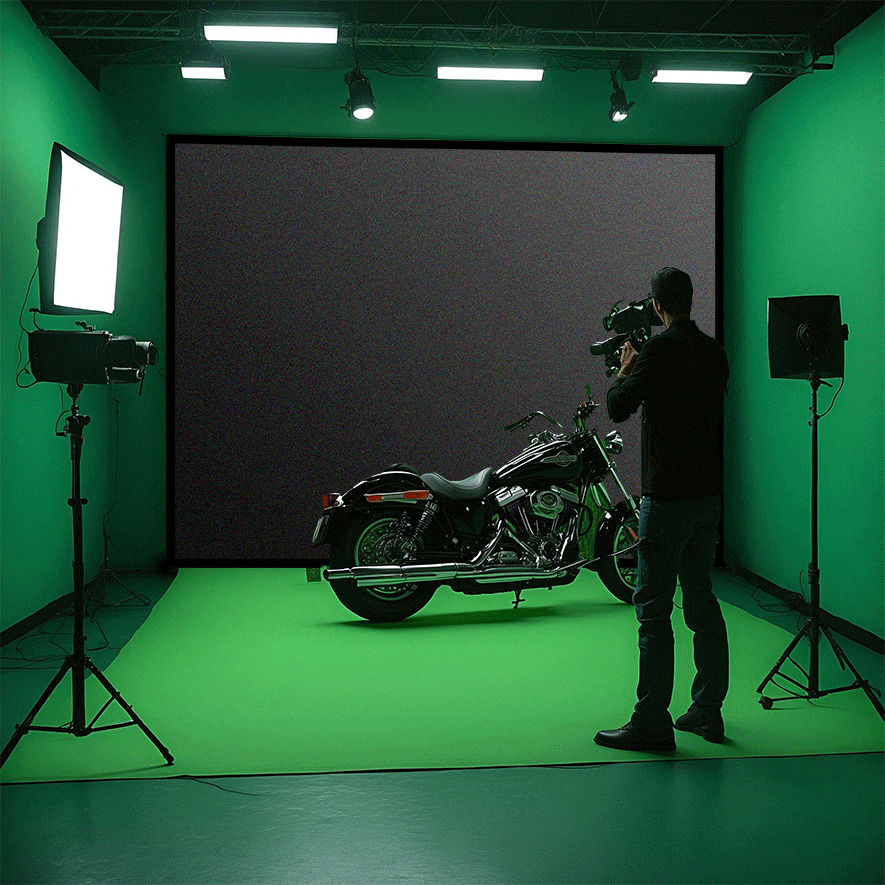Understanding Hybrid Virtual Production in Virtual Production: The Need!
The film rebels and tech trailblazers- buckle up because we’re about to break down the game-changing world of Hybrid green screen technology also known as Hybrid Virtual Production.
Hybrid Virtual Production technology is here to blow your mind! This fantastic fusion of old-school and high-tech wizardry is transforming virtual production as we know it. Imagine unleashing unprecedented creativity, efficiency, and jaw-dropping realism in your projects. Sounds incredible, right?
CONNECT WITH US
Questions??? How is this hybrid magic shaking up the industry, and how can you ride the wave to create stunning, immersive content? All are answered for you!
Virtual production has emerged as a game-changer in the ever-evolving landscape of film and media production, blending traditional filmmaking techniques with cutting-edge technology. At the heart of this transformation is hybrid virtual production technology.
Without wasting much time, let’s understand what a hybrid virtual production is from the basics!
Hybrid VP combines traditional green screen techniques with advanced virtual production technologies. Unlike the conventional green screen, which solely relies on post-production compositing, the hybrid virtual production utilizes real-time rendering and live-action elements to create immersive environments during the shoot.
Critical Components of Hybrid Virtual Production:
- Traditional Green Screen: The classic green backdrop is used to shoot actors and objects, which will later be replaced with digital backgrounds.
- Real-Time Rendering Engines: Software like Unreal Engine or Unity that generates realistic environments and visual effects in real time.
- LED Screens: Sometimes used with green screens, LED walls display dynamic backgrounds, allowing actors to interact with their environment more naturally.
- Motion Capture and Tracking Systems: These track the movements of actors and cameras, ensuring the virtual and physical elements are perfectly synchronized.

Why Use Hybrid virtual production in Virtual Production?
The very first answer is to enhance creativity and flexibility.
Hybrid virtual production technology empowers filmmakers to visualize the final scene while shooting, offering more creative freedom and flexibility. Directors and actors can see the virtual environment in real time, facilitating better performance and direction.
Secondly, it is to improve efficiency and cost-effectiveness.
By integrating virtual elements early in the production process, a hybrid virtual production reduces the need for extensive post-production work. This approach can lead to significant cost savings, particularly in high-budget films where reshoots and complex VFX work can be prohibitively expensive.
Thirdly, offering realistic interactions and lighting.
One of the significant advantages of using a hybrid virtual production is the ability to achieve more natural lighting and interaction. LED screens can cast realistic light and reflections on the actors, creating a seamless blend between the physical and virtual worlds.
How to Implement Hybrid virtual production in Virtual Production?
Step 1: Pre-Production Planning
Alright, it all starts with a plan. Think of it as your secret recipe for success. Whip out those storyboards, crank up the pre-visualizations, and go virtual scouting like a boss. Round up your VFX supervisors, set designers, and directors for a mind-meld session to figure out how to seamlessly blend your virtual and physical worlds.
It’s like planning a party but with fewer balloons and more digital magic.
Step 2: Setting Up the Green Screen
Alright, Time to set the stage!
Depending on your scene needs, you’ll need to create 3d assets which will serve as environments to be used instead of the green screen. Ensure your lighting game is on point to avoid those pesky shadows and reflections. Unless you’re filming a scene where a ghostly apparition is a plot twist, in which case, go wild!
Step 3: Integrating Real-Time Rendering
Now, let’s bring in the tech wizards. Once you’re done creating 3D environments, fire up those real-time rendering engines with Unreal Engine to create your virtual playground. These engines are like the ultimate control freaks—they let you make real-time adjustments so your scene can look perfect on the fly.
Step 4: Shooting the Scene
Lights, camera, action! With everything set up, it’s showtime. Your actors can now perform against the green screen, making the whole experience feel like stepping into a different world. Directors, you get to watch the magic happen in real time, so feel free to tweak and perfect until everything is just right
Step 5: Integrating Real-Time Rendering
Even with all this tech magic, some post-production love is still necessary. Composite the final shots, sprinkle in some extra VFX pixie dust, and fine-tune the scenes to perfection. It’s like adding the final touches to a masterpiece—just to make sure not to go all George Lucas and overdo it.
And there you have it! Follow these steps, and you’ll be a hybrid virtual production pro, ready to create some seriously epic content.
Aspiring filmmakers like you can unlock all these new possibilities by getting a grip on hybrid virtual productions. This tech isn’t just a flash in the pan; it’s reshaping the future of content creation. You should want this tool in your arsenal if you’re a modern filmmaker.
At The Virtual Production Academy, we’re all about empowering creators with the know-how to wield this game-changing tech.
Stick with us for more tips, tricks, and tutorials on the industry’s coolest trends and technologies. Stay tuned and get ready to level up your production game!
